End Of CBA Rules Are Just A Speed Bump

There are several special provisions in the CBA that affect contracts which extend beyond 2020. The two main rules are the Deion Rule and the 30% Rule. Jason Fitzgerald of Overthecap.com has written about the 30% Rule in his particularly fine article, "Carson Wentz' New Contract and the CBA," which points out some loopholes teams can use to circumvent the rules You can read Mr. Fitzgerald's article here.
The Deion Rule:
In 1995 Deion Sanders signed a 7-year contract worth, on paper, $35 million. The contract scheduled $1M in base salaries over the first three years to go with a $12 million signing bonus. At the time, teams could prorate the signing bonus over the entire 7 year length, so the proration was only roughly $1.7M per season. That allowed Sanders to play for cap charges of $1.89, $2.2, and $2.05 million for the first three season even though he had received $13 million, or roughly $4.33 million per season. Remember, the salary cap in 1995 was just $37.7 million.
The NFL and Union quickly passed the Deion Rule to prevent such a thing from happening again. The gist of the rule requires the P5 salary (base salaries plus roster, work out, and reporting bonuses) to at least equal the signing bonus prorations for the first three years. This rule specifies exactly what counts as salary, and does not list incentives or escalators. At present, signing bonuses could only be prorated over a maximum of 5 years.
Under the Deion Rule, the $1.7 million per year proration (which totals $5.1 million) would have to be matched by $5.1 million in salary. That means Dallas would have had to take $10.2 million in cap charges over the first three years instead of the $6.14 million Dallas put on the salary cap, a difference of $4M.
The 30% Rule:
This rule looks nasty. It states that for any contracting extending beyond the current CBA's term, "Salary" can increase by a maximum of just 30% of the salary scheduled for 2020, the final league year. Absent finding some loopholes, that would make signing players with contracts that expire after the 2019 season very difficult. For example, signing Martinez would be difficult using the Packers' normal structure. Let us assume 4 years, $36 million.
| YR | Base | SB |
Roster/W-O |
Cap | Cash |
| 20 | 820K | 3M | .5M/.5M | 4.8M | 13.8M |
| 21 | 1.36M | 3M | .5M/.5M | 5.36M | 2.36M |
| 22 | 1.91M | 3M | .5M/.5M | 5.91M | 2.91M |
| 23 | 2.46M | 3M | .5M/.5M | 6.46M | 3.46M |
| Tot | 6.55M | 12 | 4M | - - - | 22.55M |
Here, the Packers give Martinez a $12 million signing bonus and "salary" consisting of the minimum base ($820,000), plus $500,000 in work out and game active bonuses. So, "Salary" scheduled for 2020 would be $1.82 million, and it can increase by a maximum of 30% each year ($546,000 per year). This normal contract above violates the Deion Rule because the signing bonus prorations for the first three years of the contract add up to $9 million while the salary adds up to only 7.09 million. It also does not add up to enough money. Total cash over four years is $22.55M, or $5.63M AAV, which I do not think Martinez would accept.
To comply, the Packers would have to increase the "Salary" portion paid in 2020 to Martinez by many millions, but that increases his cap number by a corresponding amount. The problem is Green Bay is projected to have just $13.7M in cap space in 2020, plus rollover (but one would assume that the Packers want to roll over money into 2021.
The solution is to find a loophole or three. Jason Fitzgerald points out several loopholes and illustrated how the Eagles used them to sign Carson Wentz recently. One trick is to find money that can be paid to the player but is not recognized as "Salary" by the CBA.
One loophole has been dubbed "Log Escalators" by Mr. Fitzgerald. Escalators (unless fully guaranteed, which is rare in the NFL) are always "not likely to be earned," and thus not recognized by the CBA for cap purposes as salary. Even if a player accomplishes whatever is required in 2020 to trigger an escalator for 2021, the player still has to make the team in 2021 to earn the money. So the team can make the escalator so easy to earn that all the player has to do is to fall off the proverbial log to earn it.
Jason Fitzgerald's article on the Carson Wentz contract illustrates a real life example of a team using escalators to circumvent the 30% Rule. Naturally, the deal is complicated. Wentz signed a four-year, $128 million extension, or $32M AAV. The signing bonus was just $16.367 million, which is unusually low for a quarterback, but over $66M is fully guaranteed at signing and $107M is virtually guaranteed. Here are the details:
| YR | Base | SB | Roster | Option | Cap | Cash |
| 19 | 720K | 7.67M | 8.4M | 17.1M | ||
| 20 | 1.38M | 3.27M | 8M | 6M | 18.6M | 39.4M |
| 21 | 15.4M | 3.27M | 10M | 6M | 34.7M | 25.4M |
| 22 | 22.0M | 3.27M | 1K | 6M | 31.2M | 22.0M |
| 23 | 20.0M | 3.27M | 5M | 6M | 36.3M | 27.0M |
| 24 | 21.0M | 5M | 6M | 32.0M | 26.0M |
A few things. Wentz' rookie deal called for a $7.9 million cap charge in 2019, so his cap hit increased by $500,000. The 2019 signing bonus proration consists of the $3.27 million plus the $4.4 million prorated signing bonus from his rookie deal. The 5th year option for QBs in 2020 was estimated at $22.7 million, so the Eagles saved $4 million on the cap there. The Wentz contract is analagous to extending Kenny Clark now: both players have completed the bare minimum of three seasons before an extension is allowed, and both have a 5th-year option for 2020.
Another loophole is that option bonuses are optional and thus are considered not likely to be earned, so the Eagles put in a $30 million option bonus in year two of the contract (2020). It is treated as if were a signing bonus when calculating "Team Salary Cap" but the proration is simply "Salary" as to the player. So when exercised it is prorated like a signing bonus for the team but the prorated portion for each year of an option bonus ($6M here) is considered "Salary" for purposes of the 30% rule. Wentz is willing to do that because if the Eagles do not exercise the option bonus, Wentz' base salary increases from $1.38 million to $31.38 million and becomes fully guaranteed. That would increase his cap hit from $18.6 to $42.65 million for 2020. That is not going to happen. Wentz also would have $62 million in dead money, so he will not be cut.
Note that Wentz' 2020 "Salary" is $1.38M plus an $8M roster bonus plus the $6M option bonus proration, for a total of $15.38M, and 30% of that is $4.614M. So, Wentz' 2021 "Salary" can increase by $4.61, that is from $15.38M to $19.99M maximum. Except his 2020 salary as shown is $15.4M base plus $10M Roster plus $6M option bonus, or $31.4M. That should violate the 30% rule.
Enter the next loophole: the log escalator. Wentz' actual 2021 base salary as written in the contract is for $3.9M (which complies with the 30% Rule) but he can earn $11.5M in escalators if he or the team shows improvement year over year in any of "a ton of" categories or if Wentz is named to the Pro Bowl in 2020. Once that is triggered and earned Wentz' base salary jumps from $3.9M to $15.4M, and his "Salary" resets to $31.4M for 2021, so there are no more 30% Rule issues for subsequent years.
What are the Speed Bumps caused by these rules for the Packers?
Wentz' signing bonus was abnormally low. The cash flow in year one and two was reversed from what is normal, and the player accepted non-guaranteed escalators later in the contract. Wentz can accept the escalators because his dead money is so large that the Eagles would have a tough time cutting him as late as 2022 even if it became apparent that the team had made a ghastly mistake. Truly massive dead money will not be a feature of any contracts for any of the players the Packers might want to extend now or re-sign in 2020.
The Packers can be expected to use log escalators, option bonuses, or any device that is treated as if it were a signing bonus but counts as "Salary" to retain the players they covet. Let's consider Martinez and Clark. I confess that I had trouble constructing a contract for Martinez wherein the 2020 cap is not almost half of the Packer's $13.7 million projected cap space. Here is an example of an extension for Martinez.
| YR | Base | SB |
Roster |
WO | Option | Cap | Cash |
| 19 | 720K | 1.7M | - - - | - - - | 2.42 | 8.72M | |
| 20 | 2.95 | 1.6M | .5M | .5M | 1.4M | 6.5M | 9.1M |
| 21 | 3.97 | 1.6M | .5M | .5M | 1.4M | 8.15M | 4.97M |
| 22 | 5.44 | 1.6M | .5M | .5M | 1.4M | 9.8M | 6.44M |
| 23 | 6.91 | 1.6M | .5M | .5M | 1.4M | 10.95M | 7.91M |
| 19.54 | 8M | 2.5M | 2.5M | 5.6M | 37.24M | 37.14M |
I do not love this contract extension. There is a fair amount of dead money, and the $6.5 million cap hit for 2020 is a lot considering that the Packers are expected to have $13.7 million in cap space in 2020 (plus rollover). It also reduces 2019 cap rollover by $300,000. Since Martinez is scheduled to earn $2.025 million, the new money over the four-year extension would be $8.78 million AAV. He would have almost $2 million in cap savings in 2021 if cut (and if the new CBA still has a June designation) with $3 million dead in 2022 as well.
If one wanted to knock down the $6.5 million cap hit, the Packers could reduce Martinez' $2.95 million base pay in 2020 to the minimum of $820,000 to get a $4.37 million cap charge for 2020, and then use escalators to balloon his base pay in 2021 to make up for the lost cash. That would require some trust, and the cash flow in year one and two would not be great.
Extending Kenny Clark could take a similar path:
| YR | Base | SB | Roster | WO | Option | Cap | Cash |
| 19 | 720K | 1.6M | - - - | - - - | 2.32M | 8.72M | |
| 20 | 3.1M | 1.6M | .5M | .5M | 3M | 8.7M | 19.1M |
| 21 | 5.23M | 1.6M | .5M | .5M | 3M | 10.83M | 6.23M |
| 22 | 7.36M | 1.6M | .5M | .5M | 3M | 12.96M | 8.36M |
| 23 | 9.49M | 1.6M | .5M | .5M | 3M | 15.09M | 10.49M |
| 24 | 11.62M | - - - | .5M | .5M | 3M | 15.62M | 32.62M |
| 37.52M | 8M | 2.5M | 2.5M | 15M | 65.52M | 65.52M |
Since Clark was scheduled to have cap charges of $2.978 and $7.69 million for a total of $10.668 million, his proposed cap hits of $2.32 and $8.72 million increases Clark's cap hit total over 2019 and 2020 by just $352,000. The team could reduce Clark's base salary in 2020 and just use an escalator, but Clark could be cut. His cap savings would be a negative $6 million if cut in March of 2021. This structure follows the pattern in the Wentz contract with the cash being more in the second year than the first. The new money AAV is $13.713 million.
Extending Clark makes more sense than I had previously supposed, but there is more risk for the team. It will be interesting to see if the Packers extend anyone before the start of the season. Again, Mr. Fitzgerald's article is well worth reading. You can use the hyperlink above or paste https://overthecap.com/carson-wentz-new-contract-and-the-cba/ into your browser.
PLEASE SUBSCRIBE TO OUR CHEESEHEAD NATION WEEKLY NEWSLETTER HERE.
__________________________



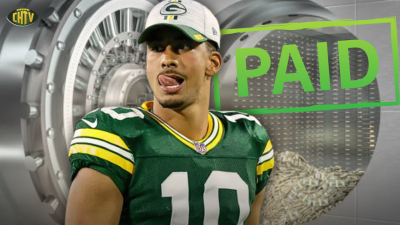
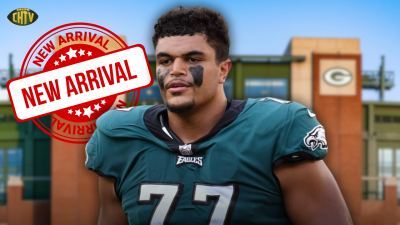

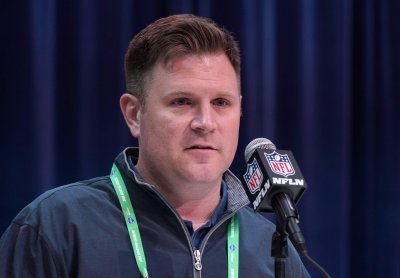



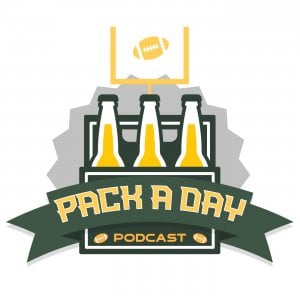

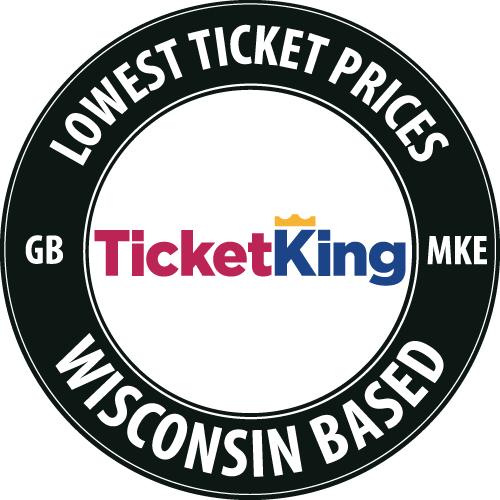
Comments (14)
frankohodge
July 11, 2019 at 06:28 pm
Fascinating. As Vic emphasizes, you cannot be a really serious fan without coming halfway to grips with this stuff. Homework!
frankohodge
July 11, 2019 at 06:29 pm
Fascinating. As Vic emphasizes, you cannot be a really serious fan without coming halfway to grips with this stuff. Homework!
frankohodge
July 11, 2019 at 06:29 pm
oops
mattgsx
July 12, 2019 at 12:32 am
To channel my inner Vic, log escalators sound a lot like a train whistle, and I have no desire for the Packers to go where that train is heading.
Thegreatreynoldo
July 12, 2019 at 04:11 am
I avoided using escalators for the Clark and Martinez examples simply because I don't know if the players would accept non-guaranteed money like that. True, escalators will hit in 2021, and we who are just fans at least have no notion of what the cap limit might be that year.
If our cap space is $13.7M plus perhaps $5M rollover, then the following:
Martinez: $6.3M cap on an $8.7M AAV for 2020;
Lowry: $3M cap # on a $5M AAV?
Crosby: $2M cap # on a $3.5M AAV???
Allison: ?
Bulaga: ?
Spriggs: ?
Fackrell: ?
One of McCray/Patrick: ? (they are RFAs).
Daniels: ?
Who knows? Perhaps the DL will look fine w/o Lowry and Daniels for 2020. Clark, Adams, Keke, Lancaster, and Fadol with Gary and ZaDarius rotating in is adequate for 2020? Eh, I'm not sure about that, unless Adams and Keke both come through. There is a very small chance GB trades Daniels soon, I suppose.
Perhaps Crosby doesn't make the 2019 team and GB nets about $3.1M in additional cap space. Maybe GB nets $500K if Josh Jones departs or $1.1M if Marcedes is a surprise cut.
Obviously, GB might net $8M more if Graham is cut prior to 2020. That means Sternberger and Tonyan have to blossom pretty fast, doesn't it? I'd love to keep Bulaga on a pay-as-you-go deal, but that takes cap space, and that bee might only be in my personal bonnet.
Hawg Hanner
July 11, 2019 at 09:26 pm
Great analysis and writeup. With the tight budget it seems to me you simply can't afford to keep Martinez after this season. In my view his stats look good but many of his tackles are made it seems after a decent gain. Maybe such analytical data is already captured and in use by the teams. Though a useful player, Blake seems at best a "white chip", somewhat better than "just a guy", but not worth any kind of money as discussed in the article.
Thegreatreynoldo
July 12, 2019 at 02:11 am
The Packers certainly will have to prioritize, and I would put Clark and then Martinez at the top of that list. Since Clark can be extended without increasing his already scheduled cap numbers for 2019 and 2020, that moves Martinez to the top of my priority list.
I like cap space more than most, but I don't want to cut off my nose to spite my face: the purpose of cap space is to pay for players the team wants or needs.
GB has no one behind Martinez. No one.
murf7777
July 12, 2019 at 08:18 am
I know I hate it when one of our third year players is NFL top two in tackles, increases from 1 to 5 sacks, 10tfl And 6 QB hits as a ILB. Also pro bowl mention last year and for 2019. He increased his “splash” plays quite a bit LY.....he’s young and intelligent and used to help keep the defense in line. He’s solid. No he’s not Mack, but Mack gets 20+! We need to keep him and I believe 8-10m is his market value. We have to keep in mind the ever increasing salary cap which elevates contracts.
mattgsx
July 12, 2019 at 10:58 am
This is the challenge with free agency. Every big ticket signing reduces your ability to extend your homegrown talent.
Martinez has been a rock at ILB. If he continues to improve, locking him up before the end of the year will provide some longer-term stability.
murf7777
July 12, 2019 at 08:20 am
Sorry, a bit of an error I meant 7-8M
Thegreatreynoldo
July 12, 2019 at 12:21 pm
2017 Martinez: worth $4.5M to $5.5M. PFF coverage grade of 47, but he was a good tackler, like Preston Brown, who also led the league in tackles but wasn't so good in coverage. Brown signed for $5.5M AAV but got just $2.5M in signing bonus.
2018: Martinez was worth $7M-$9M. He improved in coverage, getting an 82 coverage grade from PFF, but his run D looked less impressive despite all those tackles. PFF gave him an overall grade of 74.8.
He isn't as good as Jordan Hicks, who just signed for $8.5M AAV. Interestingly, Hicks at age 27 but who has missed 21 of 64 games to date took a $1M game active bonus. But Martinez is better than Kendricks, overpaid by MN at $10M AAV.
So, $7M to $8M, or $7M to $9M, I wouldn't argue with either.
flackcatcher
July 12, 2019 at 04:42 pm
Bottom line: Martinez is a red chip playing in a position that the Packers have not covered. Is the ILB slot a position of need for this team. Have the Hybrid/DB shown enough to take a ILB position slot away. Does the rookies/FA LB understand the system enough to risk the lost of a veteran. Do the Packers risk letting Martinez (a very smart guy and player) walk with the CBA expiring. Right now, only questions. I hope the Packers will have the answers by the start of this season.
PatrickGB
July 12, 2019 at 03:23 pm
I hope Russ Ball reads this article.
flackcatcher
July 12, 2019 at 04:24 pm
The real problem for the Packers is the lack of cap space in the short term. I always thought the cap was the real reason the Packers did not sign a mid level FA lineman to fill the hole at RG last season. Those who complain about Ted Thompson being a tightwad are seeing the reason why he was so unwilling to sign high level FA in his later years. Remember, Gute did not want to sign Rodgers at the time because of the serious hit the Packers would take in loss of cap space. And in the long term, the CBA has a number of unreported side agreements that will go away when the contract expires. 'Interesting times' coming for all..........